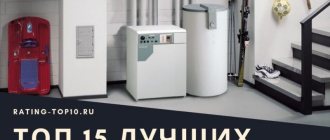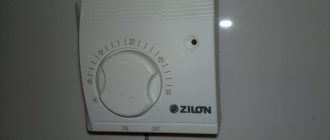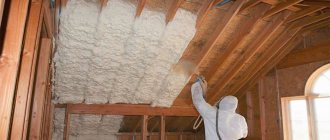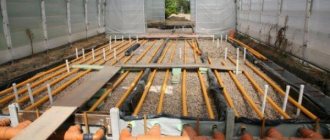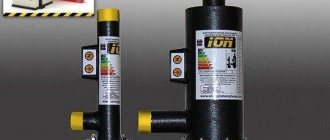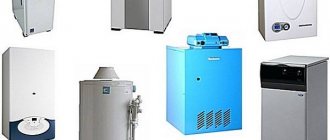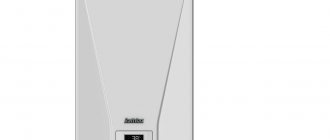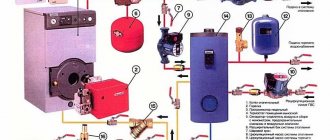Today we will get acquainted with three chimney manufacturers, find out their distinctive features and make a rating that may help you decide on the choice of chimney.
Chimney rating
We will consider the following manufacturers:
- Ferrum;
- UMC;
- YEW.
We will evaluate based on five indicators - price, quality, chimney tests, reviews of chimneys, popularity on the Internet. For each of the criteria, we will give a rating from 1 to 3, and at the end of the publication we will count all the points received and determine which brand of chimney is better: Ferrum, TiS or UMK.
Ferrum products
Let's start with the cost of chimneys.
Price
To compare prices from three manufacturers, we compiled a table and took a standard sandwich chimney kit with a diameter of 115:
- Decorative polyurethane foam, f 200.
- Boiler adapter f 115x11.
- Sandwich pipe 1.0 m, f 115x200.
- Head size 115x200.
- Start sandwich, cold, f 115x200.
- Pipe f 115, 0.5 m.
Of course, each plant may have a different type of steel or product thickness, so the closest values were selected.
| Chimney part/Manufacturer | Ferrum | UMK | Yew |
| Decorative polyurethane foam, rub. | 1200(430/0.5 mm) Ф200 | 870 (0.5mm 439 steel) | 1174 (430 steel 0.5mm) |
| Boiler adapter, rub. | 167(stainless steel 430/0.8 L=160 mm) | 220 (1mm 439 steel) | 195 (0.8mm 430 steel) |
| Sandwich pipe, rub. | 1446 rub. | 1670 (0,5439) | 1600 (0,5 430) |
| Heading, rub. | 879(430/0.5 + stainless) Ф115х200 | 660 | 813 (430 0.5m) |
| Start sandwich, rub. | 750 (430/0.5mm + stainless steel) Ф115х200 851(430/0.8mm + stainless steel) Ф115х200 | 780 | 758(0.5mm 430) |
| Pipe, rub. | 598 0.5m (430/0.8 mm) Ф115 | 630– 439 1mm | 580 – 430 0.8mm |
| Amount, rub. | 8783 | 8170 | 8320 |
As you can see from the table above, all 3 manufacturers have very similar prices. The only thing is that from the manufacturer of chimneys UMK, the sandwich pipes themselves, i.e. the main element of the chimney, are more expensive. But, as they said, companies use different materials in their production, which affects the cost (and quality, too, but more on that below).
Ratings:
- Ferrum - 1 point;
- UMK - 3 points;
- TiS - 2 points.
Ferrum stainless steel chimneys
When it comes to heating a home, almost everyone immediately thinks about the most expensive unit, the boiler, and only a small part thinks about the removal of combustion products, the chimney. If you have a gas boiler, then you don’t have much choice, the price for such chimneys is not high, and during the season, almost every brand sells such a chimney along with the boiler, and such chimneys last longer than the boilers themselves. But as for the chimney for a solid fuel boiler, there is a lot to think about and a lot to choose from. While most solid fuel boilers come from Europe, chimneys are produced in Belarus, but it’s not always possible to find the right quality, and the price of Belarusian chimneys can be overpriced. At the beginning of the year, Russian Ferrum&Craft stainless steel chimneys for solid fuel boilers, single-walled and insulated sandwich type, went on sale in Belarus, the only chimneys with a laser seam at that time. It won’t be difficult to assemble a chimney or select the necessary elements, but choosing the right manufacturer and making the right choice in terms of quality is more difficult. When you order a chimney from an online store, you cannot see from the picture what kind of seams there are, what kind of insulation there is, and it is very difficult to determine whether the chimney is of high quality or not. Today we will tell you what elements you need to pay attention to and how a high-quality chimney differs from a low-quality one.
The first thing you should pay attention to in sandwich chimneys is insulation . For a solid fuel boiler, the most important thing is that condensation does not get into it; for this, insulated chimneys are purchased. This is a chimney consisting of pipes of different diameters, between which insulation is located. So this insulation is mainly in the form of a twisted fabric; some can use reinforced mesh so that it does not sag over time. The method is simple, but not always justified, because... this mesh acts as a heat conductor between the two walls. A more expensive method is to grind the insulation, stuffing and pressing, all this is done on automatic equipment.
An O-ring that maintains the distance between the inner and outer diameters, and also closes the main insulation.
Laser seam . In Belarus, various types of welds are used for chimneys, these are overlapped, locked, and butt. There are two types of butt welding: TIG - manual welding with non-consumable tungsten electrodes in a shielding gas - argon and laser. The difference between TIG and laser welding is the thickness of the weld; in TIG it is 4 times thicker. What does this affect? When welding, alloying elements responsible for the strength of the steel burn out of the pipe; the more of them burned out, the weaker the joint.
Overlapping seam
TIG welding seam
A clear example of two chimney elements with different types of seams. The TIG weld where there is a socket has split at the base, as a rule they are not brought to the end of the pipe and this is a potential place for rupture. The laser seam is much thinner and more reliable. The difference in seam thickness can be seen in the photo.
The geometry is also important ; the chimney should be easy to assemble and each should fit together. If production is automated, then the quality of defects is reduced to zero; if personnel are involved in bending or cutting the broom, then the parts may not always turn out to be of the same shape and fit together.
The chimney to a solid fuel boiler consists of various elements. One of the most important elements is the tee. Tees are also different; often there are tees that are welded from two pipes, a hole is cut out and the pipe is welded. The Ferrum&Craft company uses a metal drawing process, where everything will be solid, without welding at the joints.
The tee is made of two pipes
Ferrum tees are made without welds.
As for the AISI steel grade , there are a sufficient number of stainless steel grades in Belarus, but 430 and 304 steel are often used for solid fuel boilers. By type of fuel, AISI 430 includes firewood, and 304 includes firewood, gas, and for coal it is best to use 316 steel. When gas is burned, not just condensate is formed, it also contains carbonic and sulfuric acid, the latter can render 1 mm unusable. AISI 430 steel in 1 year. AISI 304, unlike AISI 430, contains Ni (Nickel), which gives this acid resistance, which is why 304 is not magnetic. When coal is burned, sulfuric, carbonic, and nitric acid are released; 316 steel is used for such fuel. which contains Malibdenum (increases the maximum permissible temperature and acid resistance).
The thickness of steel is regulated only by the quality of the steel. The worse the steel, the thicker it should be; the higher the quality of the steel, the thinner it can be used. The most common steel thicknesses on the market are 0.5, 0.8 and 1 mm. In domestic conditions, you will not see a difference between 0.8 and 1 mm, for the rigidity of a chimney with a diameter of 300 mm. 0.8 mm is enough, i.e. when heated, it deforms. And the thickness also does not affect the service life of the chimney during annual cleaning; if unfavorable conditions are created for the chimney to burn out, then 0.2 mm will not save you.
A chimney for a solid fuel boiler can be selected and compared by quality in our online store. We sell only certified products at an affordable price. Today we offer single-wall, insulated, stainless steel chimney elements from Russian manufacturers Ferrum and Craft, which surpass in quality all the chimneys we previously sold. High-quality durable chimney at an affordable price in the online store 100kotlov.by.
Quality
To evaluate the quality, we will select three indicators - steel grade, steel thickness and filler in sandwich systems.
- Steel grade . Pipes and chimney elements are made from different materials, so Ferrum and TiS use 430 stainless steel, and UMK - 439. AISI439 stainless steel is similar in composition to alloy 430, but an admixture of titanium is added, which increases the heat resistance of the chimney and, naturally, increases the operating temperature this chimney. Based on the above, the UMK manufacturer uses higher quality material for chimneys that will last longer.
- Steel thickness . All three manufacturers claim a thickness of 0.5 mm for sandwich pipes, so it’s difficult to judge. One thing is clear: the thicker the metal, the better. If you look at single-wall pipes, then Ferrum’s steel thickness is 0.8 mm, UMK’s is 1 mm, and TiS’s is 0.5 mm.
- Filler . Ferrum states that in its sandwich chimneys, “Mineral wool based on basalt fiber is used as a thermal insulation material (operating temperature up to 600°C) and insulation based on ceramic fiber – up to 800°C.”
UMC uses expanded vermiculite in fillers; the excellent fire-resistant qualities of this material make it possible to reliably cope with high temperatures, and the porous structure provides good thermal insulation. The operating temperature of a chimney with vermiculite is about 900°C.
TiS in its chimney systems uses Teplorock cylinders made of mineral wool based on rocks of the basalt group, produced using a synthetic binder. Maximum operating temperature 650°C.
If the temperature in the chimney exceeds the threshold values, then the filler will be baked and there will be no point in it. Therefore, when choosing sandwich chimneys, pay attention to the filler.
Products of the UMK company
Which chimney manufacturer has the best quality of material:
Ferrum gets 2 points due to the thickness of the steel and filler. UMK receives 3 points, all indicators of this manufacturer are better than others. And TiS gets 1 point.
How to choose a sandwich pipe?
steel grade
Today, sandwich pipes for chimneys make everything and use anything as a raw material. So, just anything is no good. Only what is suitable is good.
Chimneys made of AISI 430 steel
AISI 430 is a low-carbon, iron-chromium stainless steel. An analogue of GOST steel - 12Х17. Key Features:
- good corrosion resistance in mild corrosive environments;
- good oxidation resistance at high temperatures;
- mediocre weldability - unsuitable for the production of welded products operating under load;
- At temperatures close to zero, steel becomes brittle.
Steel does not contain titanium and molybdenum and is therefore relatively inexpensive. Sandwich pipes made of AISI 430 steel can be used for chimneys of solid fuel boilers, stoves and low-power fireplaces.
Chimneys made of AISI 439 steel
AISI 439 steel is similar in properties to 430, but contains titanium and therefore has slightly higher mechanical strength and better resistance to corrosion. The scope of application of chimneys is the same as that of pipes made of AISI 430 steel.
Chimneys made of AISI 304 steel
AISI 304, also known as 08Х18Н10, is an austenitic stainless steel containing titanium and nickel. Basic properties:
- good weldability;
- high strength at low temperatures;
- Excellent corrosion resistance in mild corrosive environments.
Sandwich pipes made of AISI 304 steel can be used to create smoke removal systems with flue gas temperatures up to 300º C. This is a good solution for domestic gas boilers and water heaters.
Chimney made of AISI 316 steel
AISI 316 steel differs from 304 in the presence of molybdenum, which increases the corrosion resistance of structures. If your heating unit runs on wood, diesel fuel or gas and has high power, we recommend buying sandwich pipes made of AISI 316 steel
Chimneys made of AISI 310 steel
The main feature of AISI 310 steel is heat resistance. Pipes made of this metal can operate at temperatures up to 1000 degrees. This is a good solution for coal stoves and boilers, heating units using peat briquettes, wood, etc.
Chimneys made of AISI 321 steel
AISI 321 steel is characterized by increased resistance to corrosion, but its heat resistance limit is 600..800 degrees. We recommend using sandwich pipes made of this steel to connect wood-burning stoves.
How to determine steel grade?
In general, no way - if there are no markings on the structures, you will have to take the sellers’ word for it. High-quality chimneys are fully labeled, which provides a lot of useful information (read more about chimney labeling and how to choose a sandwich chimney).
There is one sign by which you can identify steel with a large number of alloying additives (that is, good) - it does not hold magnets. Conventional steels have pronounced magnetic properties.
Welding quality
The weld must provide a tight seal and be as resistant to corrosion as other elements of the chimney. Not just any welding technology can ensure proper weld quality. Look for sandwich pipes that are butt welded using laser or plasma welding in an inert environment. Plasma welding is used, for example.
Choice of material and thickness of insulation
In sandwich pipes for chimneys, only mineral (primarily basalt) insulation without binding components can be used. It is necessary to use insulation without binders due to the high temperature of the flue gases: the binder will still oxidize and burn out, and as a result the insulation will be damaged.
An important characteristic is the thickness of the insulation layer. (one of the most famous manufacturers of sandwich chimneys in Russia) provides the following recommendations:
Table. Selecting the thickness of the sandwich chimney insulation depending on the type of heating unit
| Type of heating equipment | Flue gas temperature, ºС | Insulation thickness, mm |
| Condensing gas boilers | 60 | 25 |
| Gas boilers | 110…180 | 25 |
| Diesel boilers | 150…250 | 250 |
| Microturbine plants | 300 | 50 |
| Gas piston installations | 450…500 | 50 |
| Diesel generator set | 450…500 | 50 |
| Gas turbine units | 450…600 | 50 |
| Solid fuel boilers | 400…700 | 50…100 |
| Fireplaces and wood stoves | 300…600 | 50…100 |
Manufacturers
In general, manufacturers can be divided into three groups:
First echelon. These are the already mentioned “Balvent” and “Rosinox”, as well as “Vulcan”, Craft, Ferrum. Expensive chimneys, the production of which uses good steel, good insulation and excellent equipment. These companies usually give a guarantee of 10...15 years, but with normal use their sandwich chimneys are quite capable of lasting 30 years.
Second echelon. These are many Ukrainian manufacturers, N&KM and some others. The cost is approximately 30% lower than that of first-tier pipes. Savings are mainly due to the quality of steel and sometimes due to welding technology. The service life is up to 20 years, the warranty is usually five years.
Third echelon. The production of such chimneys can be carried out by any company using any equipment, and therefore the quality is unpredictable. Typically, such chimneys cost 2...2.5 times cheaper than Rosinox products, but their warranty is often only a month.
Chimney tests
If you choose a chimney, then you need to know whether it is really of high quality and corresponds to the parameters stated by the manufacturer. To do this, some manufacturers conduct tests and it’s great if they post them on the Internet, this increases loyalty. To evaluate this criterion, we will look through manufacturers' social networks in search of videos of chimney tests.
Products of the TiS company
We found the Ferrum company on YouTube, where they periodically post reviews of any chimney element; there is a video on the channel where they test steel on chimneys of various brands
Video - Checking steel on chimneys
The UMK manufacturer also has its own YouTube channel, where they post video reviews of chimneys, including their testing. For example, the manufacturer conducted a series of tests where they subjected 3 chimneys to high temperatures, from 3 different manufacturers in the same price segment
Video - UMK chimney test
The TiS company is no exception with a YouTube channel, but unfortunately there were no chimney tests there, although they have a “plus”, since they actively maintain their YouTube channel and constantly post new videos.
Which sandwich chimney manufacturer is better in the tests category:
- Ferrum - 2 points;
- UMK - 2 points;
- TiS - 1 point.
Types of chimneys
A fuel combustion waste removal system is necessary for the installation of sauna stoves and gas boilers; the popularity of the models depends on the quality of the design, the materials from which it is made, as a rule, ceramics, brick, stainless steel. Let's look at what types of chimneys there are:
- pipes can be placed inside main walls;
- install free-standing channels, making them, for example, from sandwich panels;
- Another placement option that needs to be identified is external fastening of the equipment to the facade of the building, using holders.
For a private house with brick floors, the first option will be the most suitable; it does not require additional costs; you can equip the system yourself, simultaneously with the construction of the building.
Fireplaces and stoves are divided according to the method of removing combustion products into two main categories:
- natural gas removal is created due to draft;
- forced operation occurs thanks to a fan integrated into the boiler.
For the second option, it is better to mount a compact coaxial system. Single-wall structures consist of a stainless steel pipe with a thickness of 0.6 - 1.0 mm. Such products are used for indoor installation of brick risers; thanks to them, it is possible to increase the heat transfer of the system, reducing heating costs.
The double-sided version has two steel layers, between them a layer of insulation consisting of non-flammable basalt wool, often the metal is reinforced with a zinc casing. This model is better suited for installation outside a building or inside wooden baths and other buildings.
Let's pay a little attention to the classification of equipment in accordance with the materials from which it is made, its characteristics, and functionality:
- Brick and ceramic products have excellent wear resistance, long service life, and fire resistance. At the same time, the uneven internal surface promotes the deposition of soot, reducing traction; stock up on cleaning tools. This design should be installed during the construction of the house.
- Welded metal elbows are inexpensive, but can rust, and sulfur oxides combining with condensate form sulfuric acid, which destroys the structure. Their installation is a labor-intensive, lengthy process.
- Stainless steel pipes have many good characteristics: durability; easy to attach; light weight; do not corrode; they can be mounted through wooden floors, walls, roofs; easy to repair.
Due to the smoothness of the shape, the most efficient outlet configuration is a cylinder, because It is more difficult for the copati to be deposited on the walls. The dimensions of the equipment are determined by the height and diameter of the product. All calculations must be made at the building design stage, taking into account the heated area and room layout. The exhaust power must correspond to the dimensions of the boiler. It is important to comply with building code regulations; horizontal structural elements should not exceed 1 m.
Reviews about chimneys
Reviews are the most important part that can motivate people to buy, so it is very important for companies to manage their online reputation. Here we will look for several platforms for reviews and forums where there will be mentions of production companies.
On the form of the Ekaterinburg portal e1 you can find a thread where two users are discussing just 2 manufacturers - Ferrum and UMK. Thus, one writes that UMK has worse seam quality, but at the same time it heats up less at the joint.
On the Otzovik service we found the following reviews for UMK chimneys:
Quite positive reviews, the second author attached a lot of photos, so there is no reason not to trust them.
Now reviews about Ferrum chimneys.
On the same service, there was only one review, you can find and read it yourself, it is very large and informative, but, in short, the user is satisfied with the choice.
Only 1 review was found on this service for the manufacturer of TiS.
The review is good and the author gave all 5 points.
At the same time, we didn’t find much information or comparisons on the forums as with the other two manufacturers, so the ratings are:
- Ferrum - 2 points;
- UMK - 2 points;
- TiS - 1 point.
And the last criterion remained, the popularity of chimneys.
Popularity
We will check the popularity of chimneys using the Yandex.Wordstat service. Using this service, you can track how many queries were in the search engine per month. We will determine by three phrases - chimneys *manufacturer*, buy chimneys *manufacturer*, pipes *manufacturer*
| Phrase/producer | Ferrum | UMK | Yew |
| chimneys *manufacturer* | 2,786 impressions per month | 854 impressions per month | 1,099 impressions per month |
| buy chimneys *manufacturer* | 450 impressions per month | 155 impressions per month | 125 impressions per month |
| pipes *manufacturer* | 545 impressions per month | 339 impressions per month | 131 impressions per month |
Ferrum clearly stands out from the table above - 3 points.
The company Teplov and Sukhov has 1099 impressions, so they get 2 points.
And UMK - 1 point.
It is obvious that Ferrum marketers are actively investing in advertising, perhaps because of this Ferrum is somewhat more expensive
